While angel’s wings have a long pre-Christian history in the visual art of Mediterranean cultures, haloes were little-seen until the time of the early Christian church. Haloes have also appeared in Asian visual art for far longer, particularly associated with Buddha. Depictions of haloes in European visual art started to appear in images of Jesus Christ before the Middle Ages, although they adopted different shapes, including cruciforms, triangles and squares as well as the more lasting circular discs.

This breathtaking mosaic in the vault of the chapel of San Zeno, in Santa Prassede, Rome, from 817-824 CE, shows Christ in the centre with a combination of cross and disc in gold, supported by four winged angels with blue discs.

They were increasingly worked in gold leaf, as seen in the sublime Wilton Diptych (c 1395-9), where those of the Virgin Mary and infant Christ are most prominent and heaviest worked.

This painting of Noli me tangere from around 1368-70 has been attributed to Jacopo di Cione, and shows Mary Magdalene kneeling with her hands outstretched towards the resurrected Christ. Both are given richly decorated haloes.
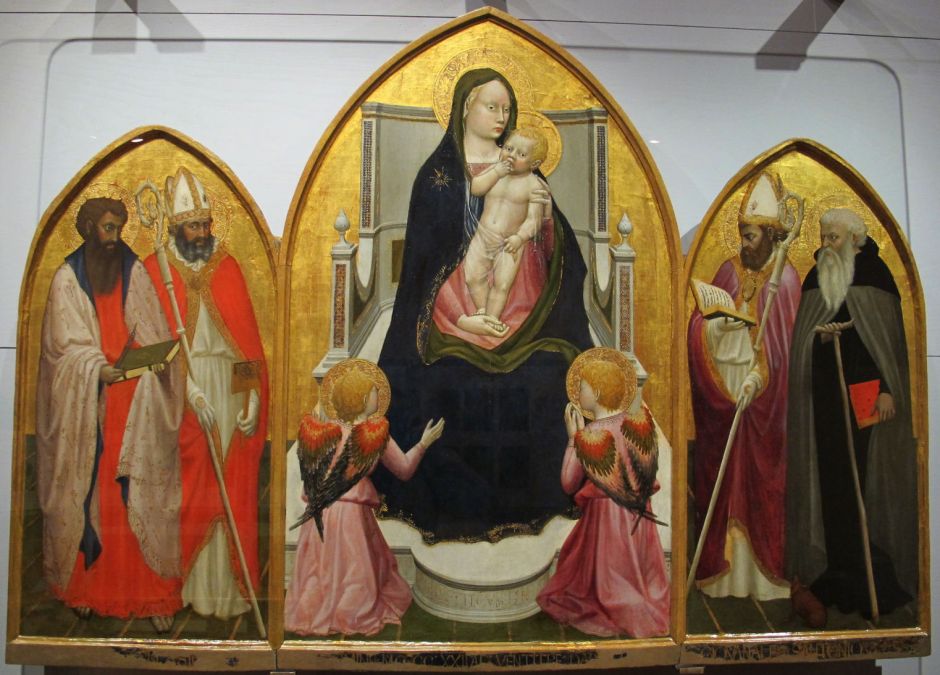
Every figure in Masaccio’s early Triptych of San Giovenale from 1422 has been awarded a halo of gold leaf. Its central panel shows the Virgin Mary and infant Christ, with two angels in attendance. As is traditional, Mary is shown wearing a deep ultramarine blue cloak. The left panel shows Saints Bartholomew and Blaise, and the right panel Saints Juvenal (patron of the commissioning church) and Anthony Abbot.
What happened in the Renaissance may seem surprising, as haloes fell from grace in the pursuit of greater realism. By the time that Leonardo da Vinci and Raphael were at their peak, haloes were fast disappearing, and where they did occur, they were usually just thin slivers or gently radiating lines of light.
Their revival came with the Pre-Raphaelite Brotherhood in the middle of the nineteenth century.
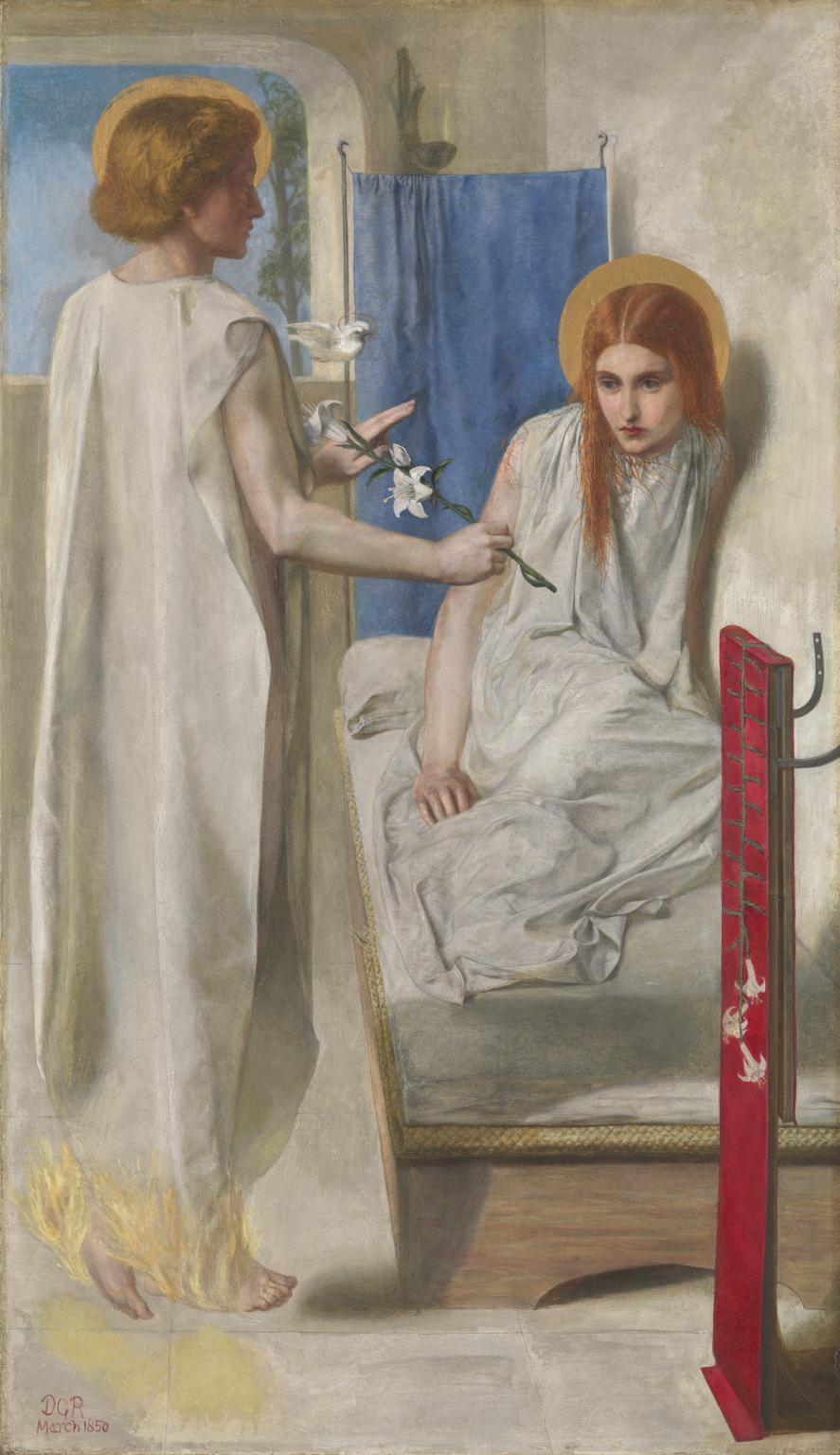
Dante Gabriel Rossetti’s Ecce Ancilla Domini! (The Annunciation) (1849–50) is a radical reinterpretation of the traditional Annunciation painting. There are gilt halos amid natural and realistic depictions of the figures and objects, and rich symbols including the lily, dove, and flames at the feet of the Angel Gabriel rather than wings on his back.
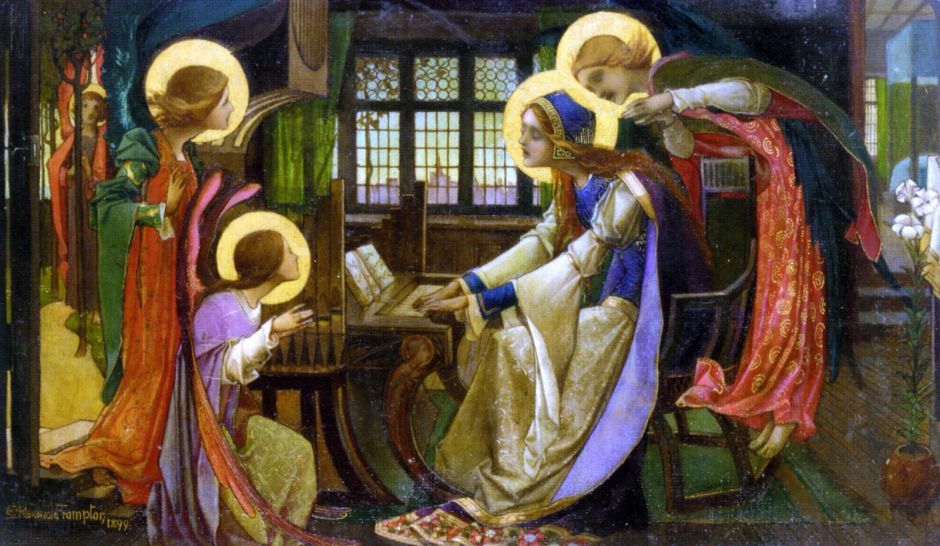
Edward Reginald Frampton’s Saint Cecilia from 1899 shows the saint sat playing a pipe organ and singing, with every head owning its own halo of a gold disc.

A little later, successors used lighting instead, as seen in Jacek Malczewski’s Annunciation from 1923. To the right, Mary is a modern young woman, whose thimble and scissors rest on a bare wooden table behind, and her head is lit with golden light in lieu of a halo. The window and curtains make clear that this is twentieth century Poland, not the Holy Land two millennia ago.
In their time, haloes had their uses for identification.
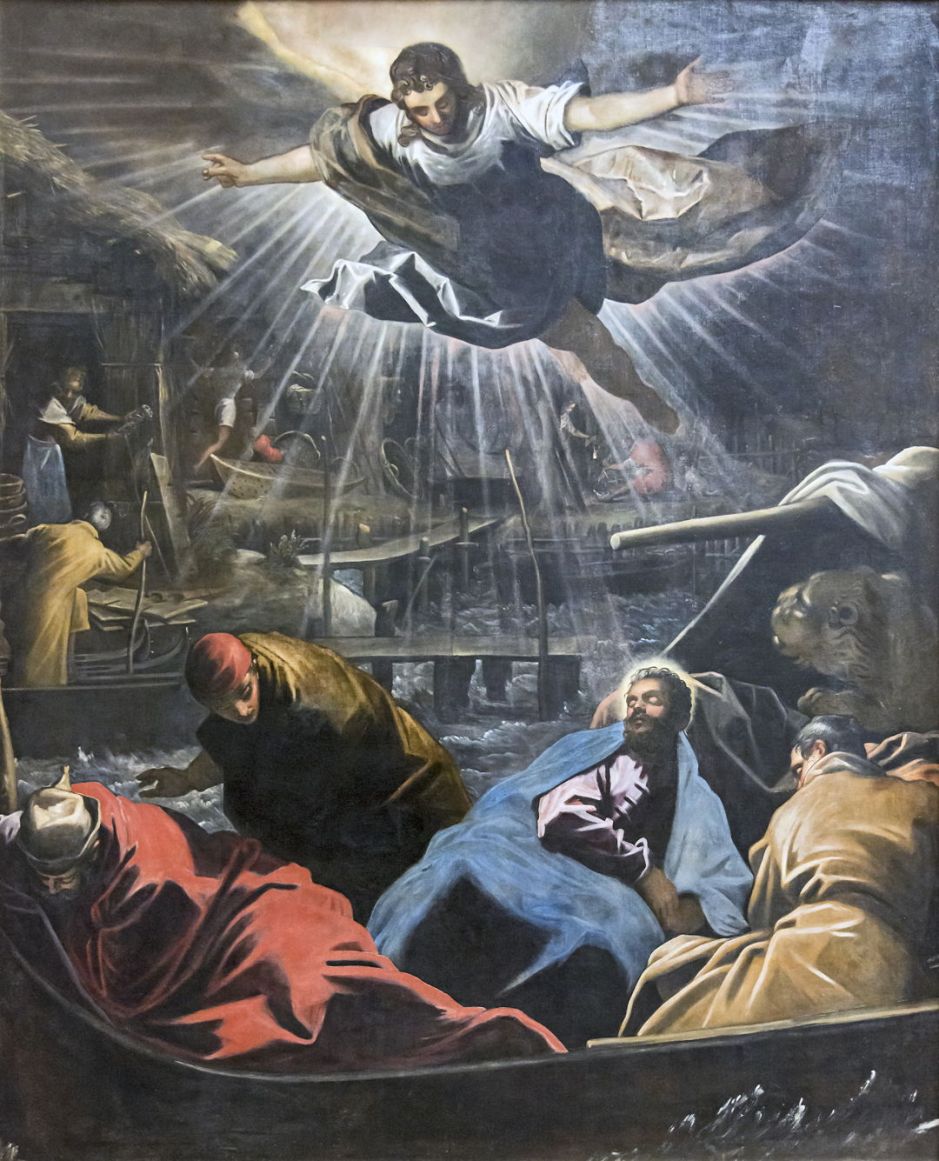
Tintoretto’s marvellous painting of the Dream of Saint Mark, or Pax Tibi Marce, probably from the early 1590s, is an example.
According to the Golden Legend, Saint Peter sent Mark to preach in Aquileia, in northern Italy. When he was returning to Rome, Venetian legend claims that Mark fell asleep in a boat that was driven ashore at Venice during a storm. Mark dreamed that an angel appeared to him and said “Peace be with you Mark,” (Pax tibi Marce in Latin) “my evangelist. Here your body will find final rest, and the city which will rise here will name you its protector.” And that’s the delightful but palpably false story of how Saint Mark came to be patron of the city of Venice. Mark is shown asleep in the boat, his head lit with a halo emanating from the angel above, who is flying in a pool of light in the night sky.

This didn’t work with groups, such as Tintoretto’s early Last Supper from 1547, whose Christ and all twelve apostles have haloes.

JAD Ingres chose to paint Joan of Arc at the Coronation of Charles VII, in Reims Cathedral (1854). She stands close to the crown, resplendent in full armour and holding a standard, the two-pointed oriflamme embroidered for her by the women of Orléans, in her right hand. Rather than covering her head, her helmet has been removed and placed with her armoured gloves by her feet. Her armour appears to have been tailored for a highly contemporary and fashionable figure, with a tiny waist, and she carries a large sword by her left leg, with an axe at her right hip. Ingres also accords her a fine halo.
In some paintings, the use of haloes extends beyond identifiable saints, to souls of the pious dead.
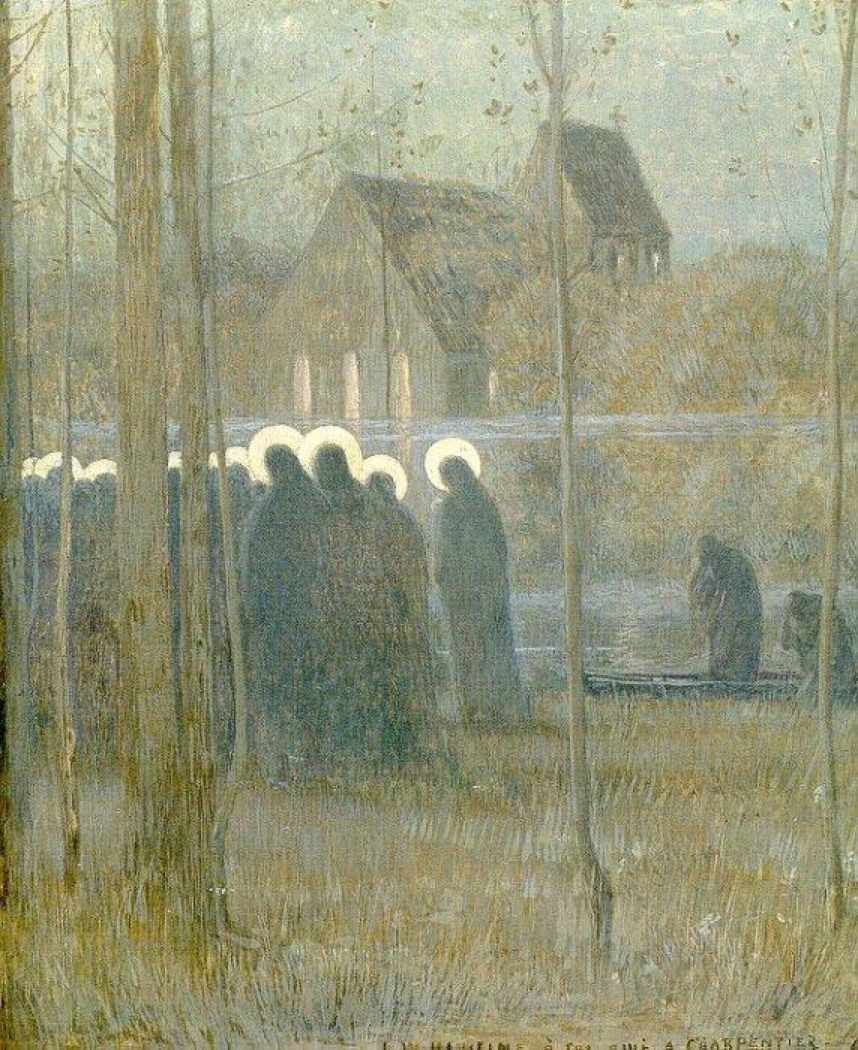
Louis Welden Hawkins’ Procession of Souls (1893) was dedicated to his close friend the successful sculptor Alexandre Charpentier. It shows a group of figures with haloes walking slowly along a riverbank, as two cloaked boatmen wait in their small boat on the river, suggestive of Charon on the River Styx. On the opposite bank is a chapel, its windows lit in the gloom of the half light.
There are few secular uses of haloes in European art.
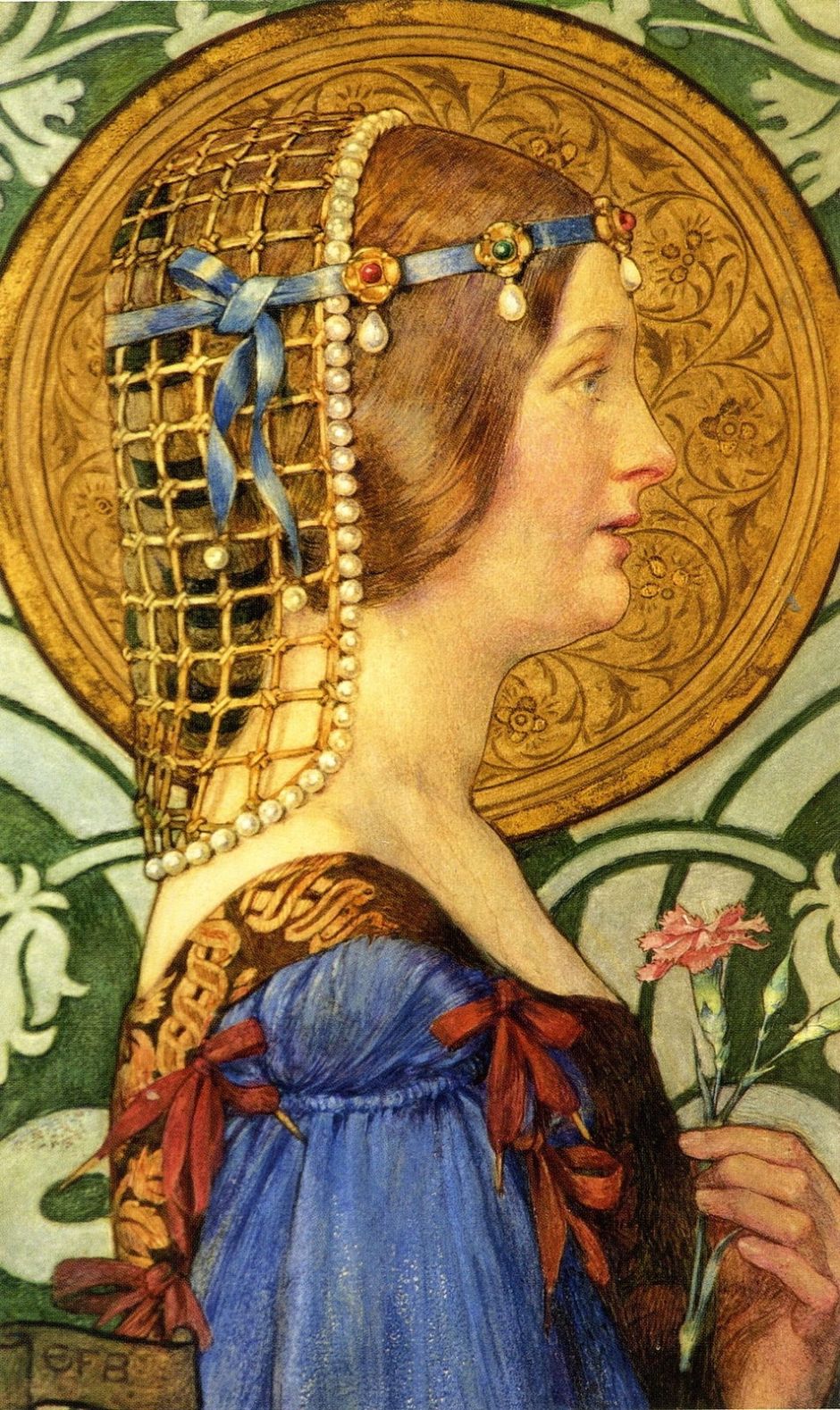
Eleanor Fortescue-Brickdale’s If One Could Have That Little Head of Hers from 1910 is a watercolour with a young woman’s head in profile against a decorated halo apparently worked in gold leaf. Its curious title refers to Robert Browning’s poem A Face, which starts:
If one could have that little head of hers
Painted upon a background of pale gold,
Such as the Tuscan’s early art prefers!
This appears to be a soliloquy on an unidentified early Renaissance painting of a beautiful woman.

Tiepolo’s Apollo and Marsyas from 1720-22 takes their musical contest as its theme. It’s easy here to mistake the figure sat on the rock throne as being Apollo, but he’s actually the youth at the left, bearing his lyre, wearing a wreath of laurel, and surprisingly given a divine halo.

Dante Gabriel Rossetti’s painting of Arthurian legend, How Sir Galahad, Sir Bors and Sir Percival Were Fed with the Sanct Grael; but Sir Percival’s Sister Died by the Way from 1864, awards haloes to what at first appear to be secular women. In fact he has stretched this legend to include the Virgin Mary, in the left foreground with her white lilies, also given haloes, and a host of angels with wings forming the background to the frieze.

